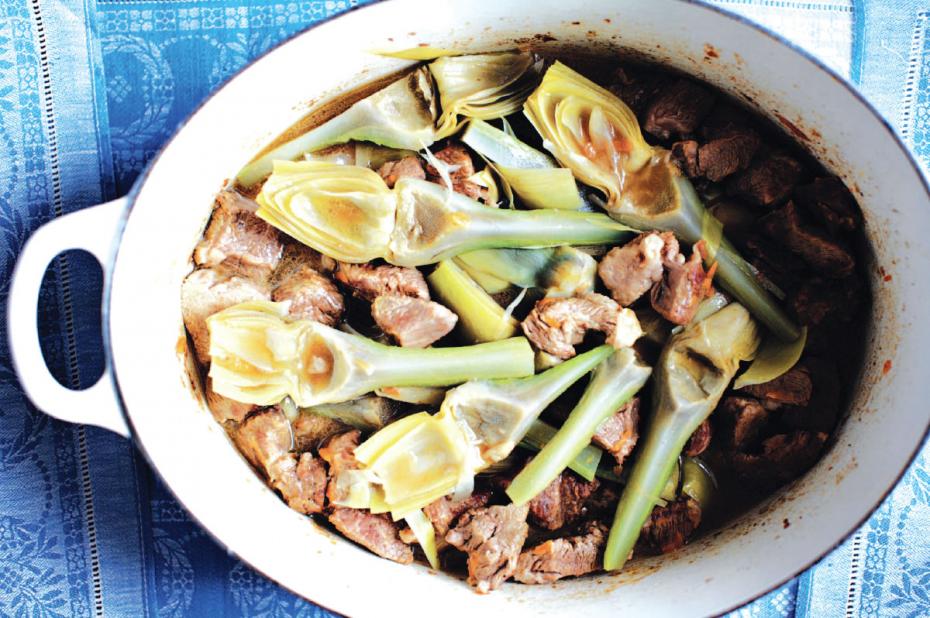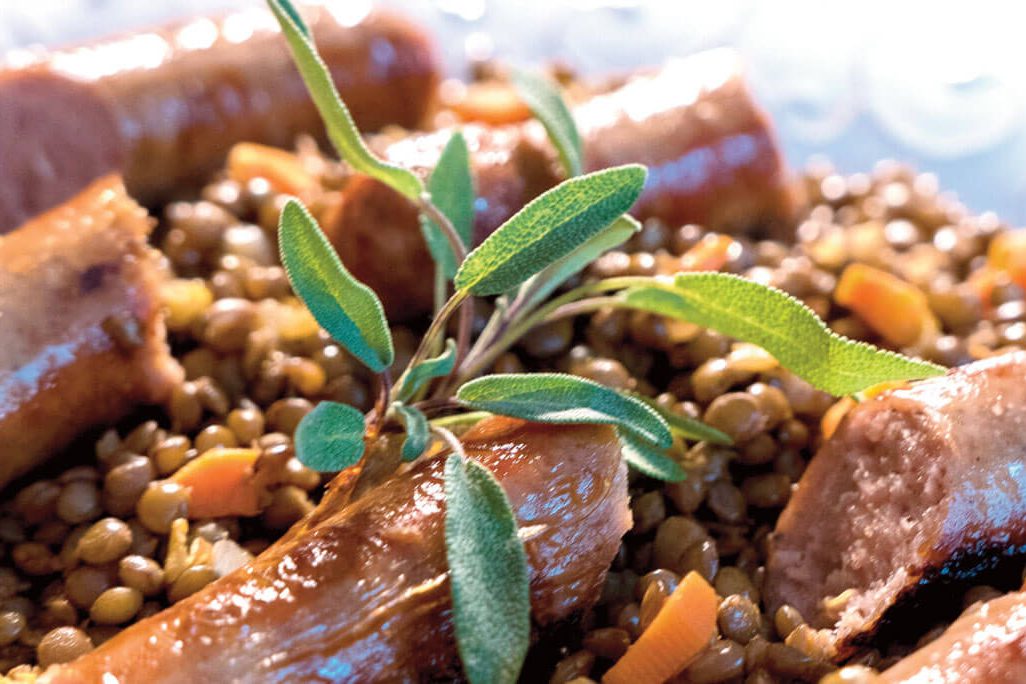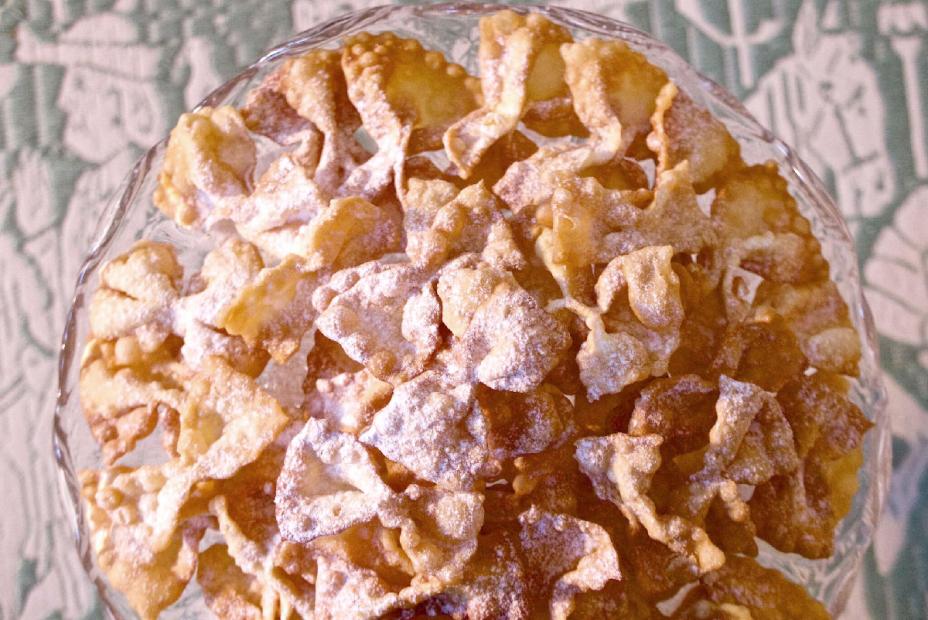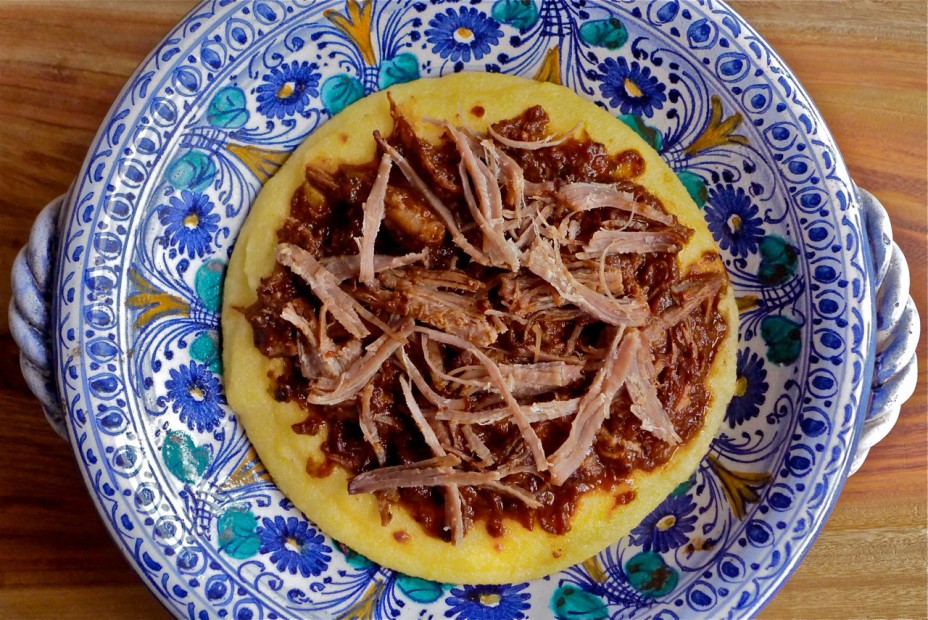Historically and until the present day, enormous quantities of abbacchio, milk-fed baby lamb, have been consumed in Rome and its outlying region from Easter until June 24, the feast of San Giovanni. For example, in 1629, the city alone recorded selling 165 thousand carcasses for 115 thousand inhabitants during this period. A look at any traditional Roman menu today, or any Roman cookbook, for that matter, shows that it is still preferred to any other food, even bread.
It should come as no surprise, then, that the Romans are the most discriminating of all the Italians when it comes to cooking lamb. While other regions have a predilection for spit-roasted meats, they have a propensity for stews, as evidenced in the skill with which they transform economical cuts of meat into succulent stove-top dishes. One of the most delightful at this time of year is a long-simmered braise of young lamb with fresh artichokes. In the original recipe, given to me by a friend from Lazio’s northeastern Rieti province, delicate, six-week-old baby lamb is used.
“Spring lamb” has an entirely different meaning in the States, where domestic animals are slaughtered at between eight and ten months. To avoid gamey-tasting meat, butcher and meat expert, Pat La Frieda recommends American lamb that is fed on grains and legumes as well as forage, which he considers incomparable for its tenderness and flavor.
I have made some minor adjustments to the original recipe, substituting lamb shoulder, the best cut for stewing because of its superior flavor and tenderness after long and slow cooking.
Braised Lamb with White Wine and Artichokes
For 4 people
The artichokes, needless to say, should be fresh ones. In Italy, wild fennel is used, but we can subsitute fresh minced dill, or even rosemary.
·half a lemon
·5 medium fresh artichokes
·2 pounds (trimmed weight) boned lamb shoulder
·4 tablespoons extra-virgin olive oil
·3 large cloves garlic, bruised
·1 carrot, peeled and shredded
·3/4 teaspoon sea salt, or to taste
·3 6-inch sprigs fresh dill
·1/2 cup dry white wine
·approximately 4 cups water or good unsalted stock
·1 heaping tablespoon flour
·freshly ground black pepper to taste
To prepare the artichokes:
1. Add about 6 inches of water to an ample glass or ceramic bowl (do not use reactive metal). Squeeze the juice of the lemon into it. Trim a thin slice from the base of each artichoke stem. Whittle off all the dark green skin on the stem, but don’t sever it from the bulb. Holding the artichoke by its bottom, press your thumb against the base of a leaf and with the other hand, snap off the upper part above the lighter-colored bottom part. Repeat this procedure with each leaf, working your way around the globe until you get to the paler central cone. The inner rows of leaves are the tender part you want, so be careful not to cut away too much. Using a sharp chef’s knife, slice off the upper part of the cone crosswise. Use a sharp paring knife to whittle away any dark parts that remain around the exterior of the base or leaves. Cut the artichoke in half lengthwise and, with a small knife, cut out the hairy choke and any other tough, inner purple leaves. As each artichoke is finished, immediately put it in the lemon water to prevent it from turning brown. (The prepared artichokes can remain in the acidulated water in the refrigerator for up to 24 hours.)

2. When you are ready, drain the artichokes and cook them in boiling water to cover until they are nearly tender, about 10 minutes. Drain and set aside.
For the lamb:
1. Trim the excess fat from the lamb. Cut the meat into bite-sized pieces. In a large, heavy skillet or Dutch oven, heat the olive oil over medium heat and add the lamb. Brown it nicely all over, about 12 minutes. Transfer the meat to a dish.
2. Add the garlic and carrot to the pan and saute over low heat until the carrot softens, about 2 minutes. Return the meat to the pan and add salt. Stir in the wine. Cook to evaporate the alcohol, 3 minutes. Add enough of the water or stock to nearly cover the meat. Reduce the heat to low, and cook, partially covered, adding additional water or stock a little at a time until the lamb is tender, about 1-1/2 hours. Check the pot frequently and add more liquid as necessary to prevent the meat from drying out. When the meat is almost done, blend the flour with cold water or stock to make a paste and stir it into the stew. Add the dill and the artichoke hearts and cover. Cook over low heat until the artichokes hearts are tender and the flavors of all the ingredients marry, 10 to 15 minutes more. Stir in the pepper.
Julia della Croce is a food writer and James Beard award-winning cookbook author and recipe developer based in New York. She is presently incubating a book about her family’s ancestral region, Sardegna. Visit her website, www.juliadellacroce.com and blog, http://juliadellacroce.com/forktales1/, connect on Facebook: Julia della Croce – chef & foodwriter, Twitter: @juliadellacroce and Instagram: juliadellacroce.
































